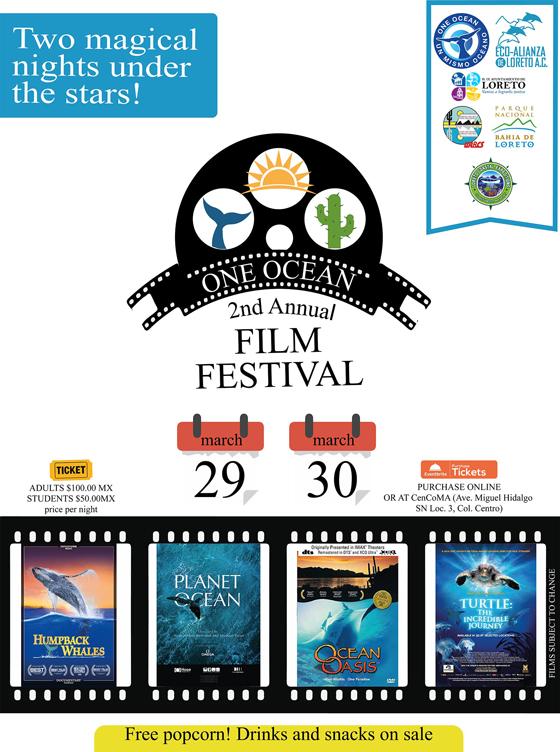 [/imageframe][separator style_type=”none” top_margin=”10px” bottom_margin=”” sep_color=”” border_size=”” icon=”” icon_circle=”” icon_circle_color=”” width=”” alignment=”center” class=”” id=””]
[/imageframe][separator style_type=”none” top_margin=”10px” bottom_margin=”” sep_color=”” border_size=”” icon=”” icon_circle=”” icon_circle_color=”” width=”” alignment=”center” class=”” id=””]Anticipation is building for Eco-Alianza’s second annual One Ocean Film Festival. In last month’s Soundings we announced the four feature films we’ve planned for this year’s two-night festival. In addition, we are pleased to announce that Friday night’s line-up will begin with an introduction by director Eréndira Valle of La Paz, who will screen her 12-minute short film, Whale Sharks of La Paz. The documentary explores conservation efforts to protect these massive creatures in the southern part of our state.

Photo courtesy of Richard Jackson, Summerhays Films and Eréndira Valle
From left to right: Richard Jackson, Marine Biologist Iliana Ortega Bacmeister, Director Eréndira Valle
On Saturday, we’ll begin the program with Loreto’s own Richard Jackson, who will introduce his 12-minute montage of stunning nature photographs and videos pulled from decades of wildlife photography in Loreto and surroundings. Rick’s film will be followed by Iliana Ortega Bacmeister, the renowned marine biologist and diver who will introduce the film Ocean Oasis. Iliana narrates and is an on-screen naturalist in the award-winning film.
Read more about the feature films on our website and, if you don’t have your tickets yet, keep in mind that seating is limited, but guaranteed if you reserve your tickets through the EventBrite ticket portal on Eco-Alianza’s website. Seats are not numbered, so arrive early to get your free popcorn (thank you Tim and Ciria Yarbrough), snag your favorite seat, grab some snacks and drinks, and socialize a bit. Doors open at 6:45 each evening and the program begins at 7:30.
Each film will be presented bilingually (either in English with Spanish subtitles or in Spanish with English subtitles). Expect to be delighted, and to come away with a renewed appreciation and enhanced understanding of our underwater world.
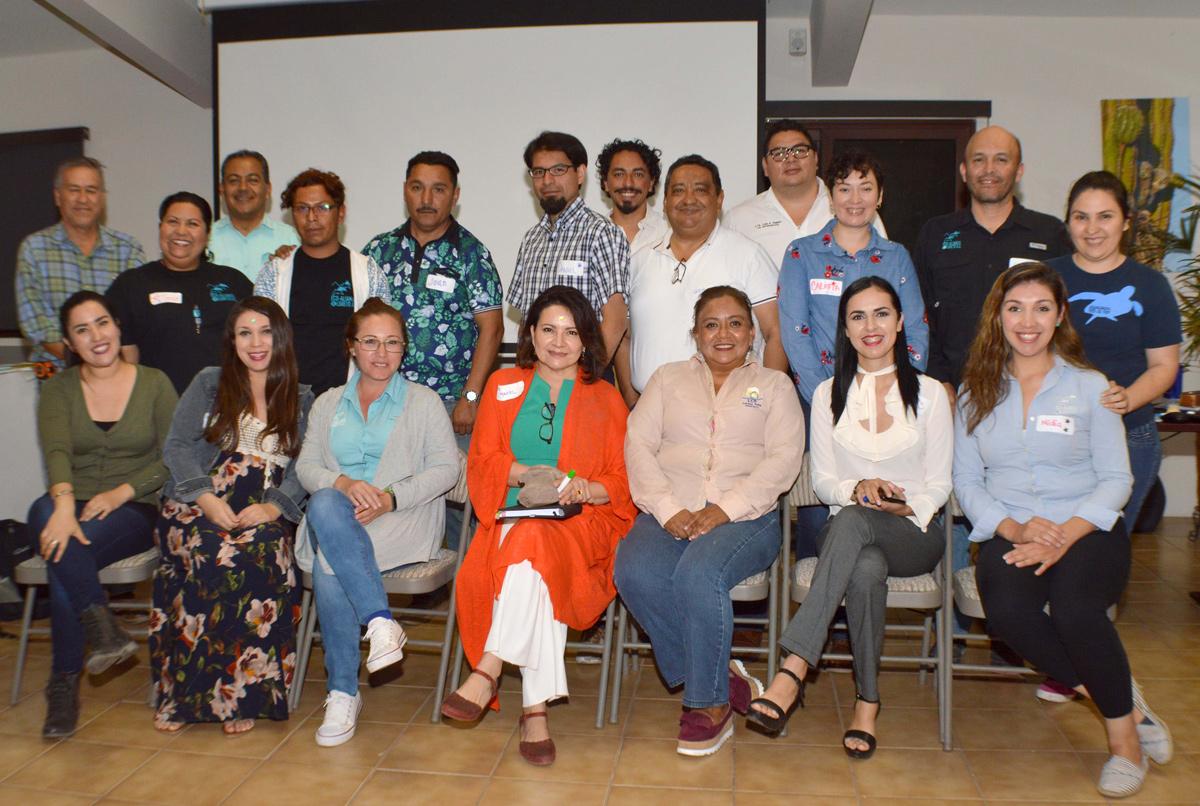
Eco-Alianza staff photo
Earlier this month, as part of the Watershed protection campaign, Eco-Alianza co-organized three days of capacity building workshops with the support of Mexico City nonprofit Centro de Colaboración Civica (CCC). The group is the same one that last year also supported the start-up of the #LoretoIdeal movement, now a very active community collaboration that combines and coordinates the efforts of 15 local and regional groups and associations (learn more on http://loretoideal-eng.strikingly.com).

Eco-Alianza staff photo
The March workshops involved Eco-Alianza staff, representatives of groups that are part of #LoretoIdeal, and Loreto municipal officials from the Ecology and Urban Planning departments. The workshops considered several #LoretoIdeal priorities in order to plan future deliberative panel discussions between local government and civil society groups. The forums will discuss, investigate, or decide on particular matters, especially in the context of LoretoIdeal’s consensual agenda. That agenda seeks to address or resolve Loreto’s priority challenges, especially those that are broadly linked to local legal instruments, and that incorporate advisory boards and committees for citizen participation. Those important legal instruments include the Local Ecological Planning Ordinance (POEL), Loreto’s Urban Development Plan (PSDURL) and Solid Waste Management Program (PMPGIRSL).
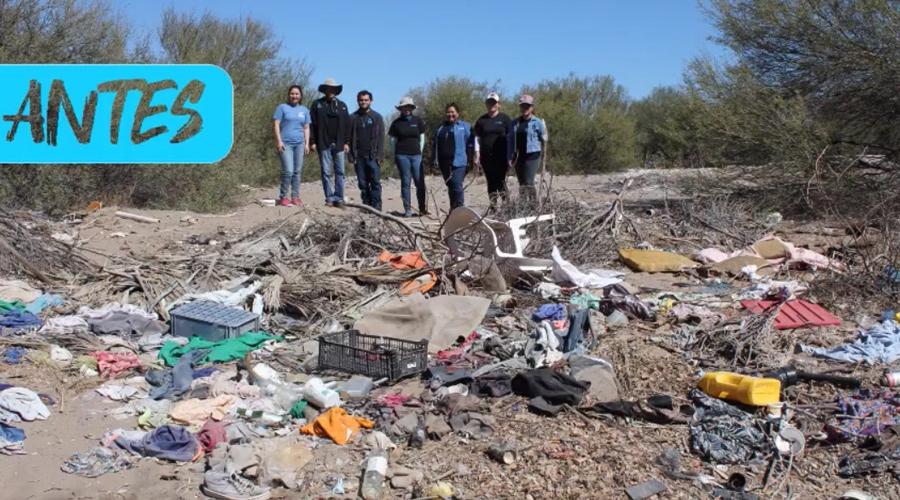
Eco-Alianza staff photo
One of the outcomes of the workshops was to embrace the #Trashtag Challenge as part of LoretoIdeal’s agenda focus on a “Clean Loreto”. The social media challenge is an active worldwide movement to motivate young people and groups to clean up litter and post before-and-after photos of their work. In Loreto, the challenge was initiated by LoretoIdeal member group the Hotel Association of Loreto, with more members of #LoretoIdeal that accepted the challenge to clean up areas and the municipal department of ecology to coordinate the disposal. On March 19, Eco-Alianza staff members teamed up in Ligüi for a cleanup of a site nearby the arroyo and beach.
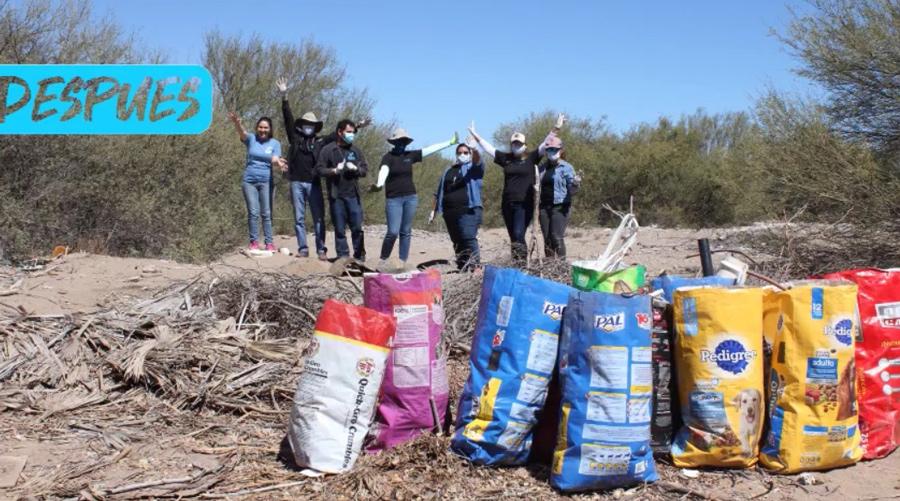
Eco-Alianza staff photo
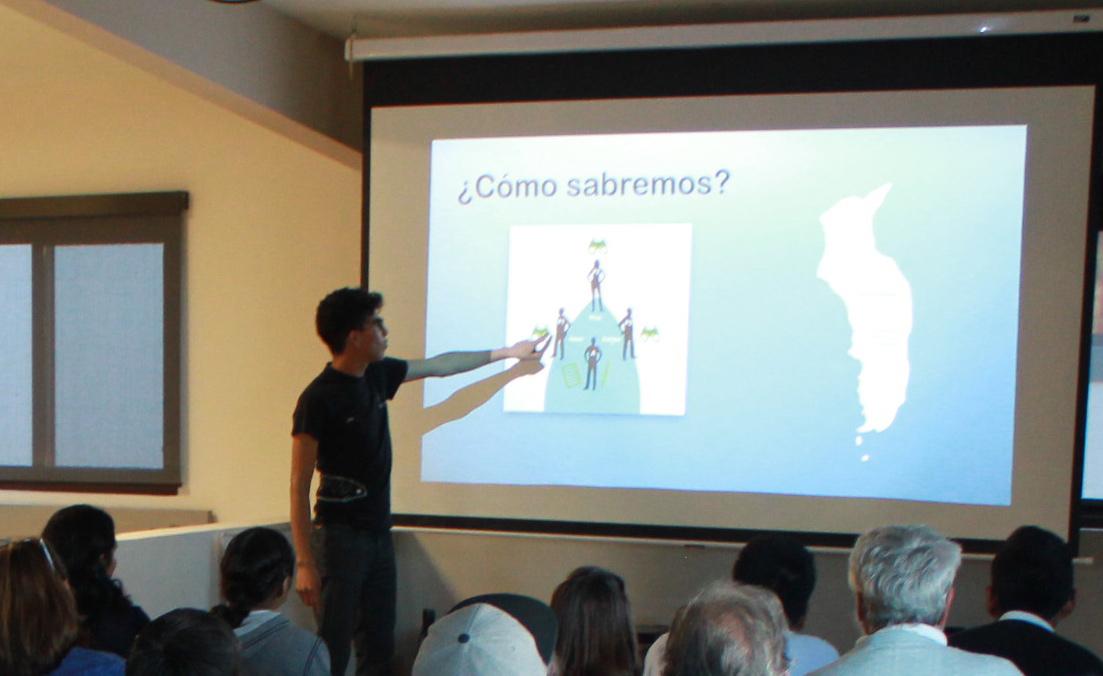
Eco-Alianza staff photo
With an enthusiastic crowd assembled at Eco-Alianza’s CenCoMA headquarters on February 28, marine biologist Christian Raúl Torres Romero recounted details of his six research trips to the Biosphere Reserve of Isla Guadalupe, 250 miles southwest of Ensenada. The presentation was part of the ongoing Visiting Scientist series, and the main subject of the research trips was the elusive species, Cuvier’s Beaked Whale.
Christian participated in research on Cuvier’s Beaked Whales and other cetaceans as a volunteer and field technician for the UABCS Program of Marine Mammal Research and the Interdisciplinary Institute of Sciences. He now works as a field instructor and environmental educator for nonprofit organizations in La Paz.
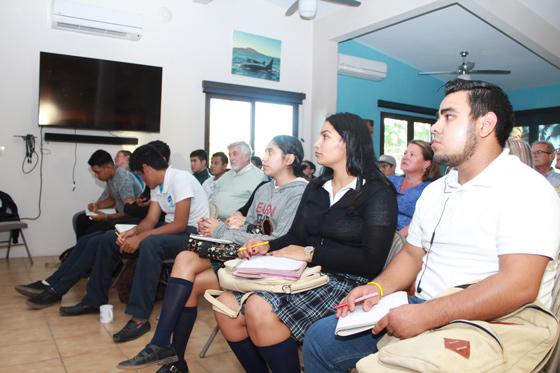
Eco-Alianza staff photo
This research project on beaked whales since 2016 is establishing a baseline for marine mammal population and other criteria in the Isla Guadalupe area, which is thought to be a region of worldwide significance for beaked whales because of the very deep ocean canyons that exist near the island. Cuvier’s Beaked Whales are known for their particularly deep diving habits, regularly taking squid and other prey at depths exceeding 1,000 meters. In 2011, a tagged member of the species was documented in a dive to 2,992 meters of depth, lasting 2 hours 17 minutes. This was both the deepest and longest dive ever documented for any mammal.
In addition to describing his research subjects, Christian also mentioned some characteristics of Isla Guadalupe, which being an oceanic, volcanic island with deep canyons around it, makes it an area conducive to the permanence of Cuvier’s Beaked Whales and other species of cetaceans. Christian’s bilingual presentation was well attended by Loretano’s, visitors, and part-year residents, including students of the English class of the CETMar campus Loreto.
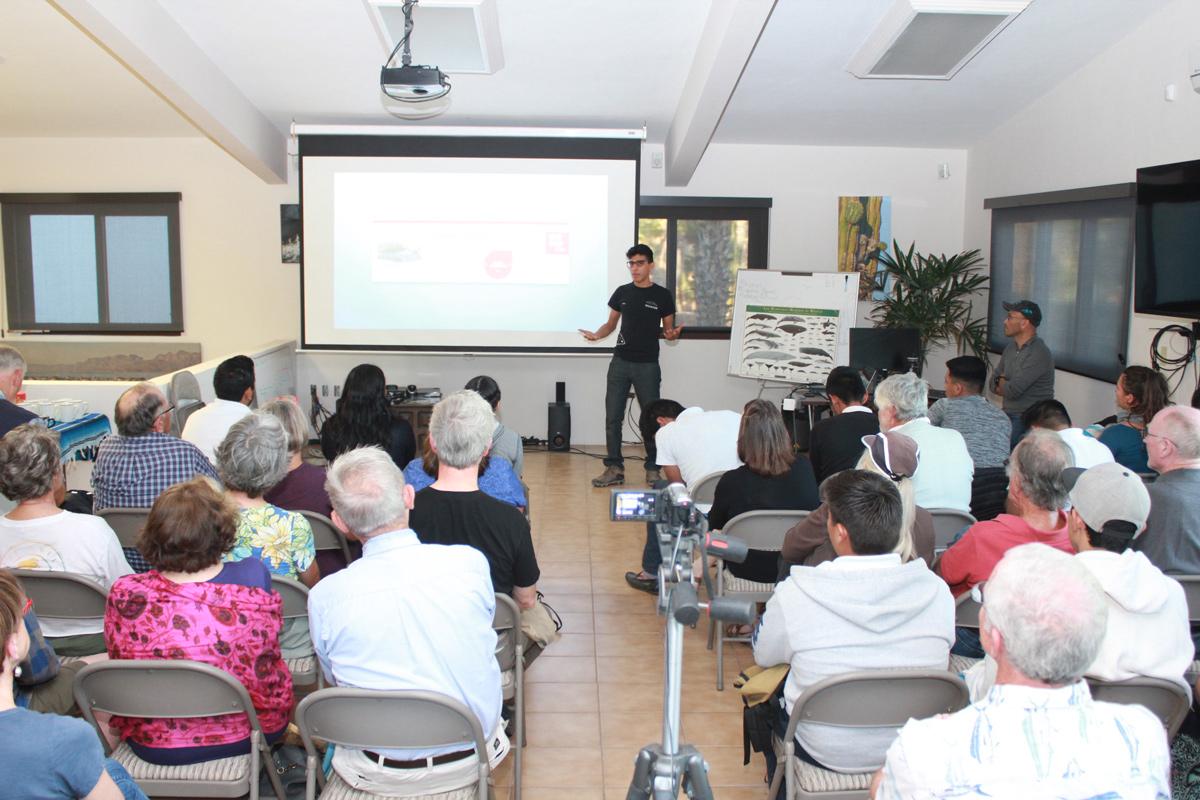
Eco-Alianza staff photo
After his presentation, Christian answered questions from several interested attendees about this unusual species and the research efforts to learn more about it. We have noted some of his answers below:
1. WHY have the scientists determined that Guadalupe is an area of worldwide importance for this species? (high population numbers relative to worldwide population? Important area for breeding? some other reason?)
Cuvier’s Beaked whales are widely distributed around the world but they are not easily seen nor found. Because of that, little is know about the species. Reserva de la Biosfera Isla Guadalupe is an area where this group of beaked whales is abundant; the rate of sighting is at least seven times higher than what occurs in any other site, which makes it really important for the study and conservation of this species.
2. If the scientists are trying to establish a baseline, what have they determined so far? Local population estimates, or any other interesting data? Or if it is still too early in their study to determine anything? When will they be able to report any results?
Results are still in analysis. We still need to complete the Photo-ID catalog, in which we record all sightings from each individual of the population through photographic identification. So far we have documented 85 individuals. In addition, this year we are working in collaboration with international institutions to track individual movements through satellite tags and detection of species according to underwater sound. We’re hoping to publish our findings within the next two or three years.
3. What physical characteristics do these whales have that allow them to dive so deeply?
Physically, Cuviers’ beaked whales do not seem to present any special feature that differentiates them among others deep divers, like sperm whales or other species of beaked whales. All of them face the same challenges — lack of light and oxygen, and a continuous increase in atmospheric pressure.
The process of echolocation (present in all toothed whales) which involves the use of sound, helps them to get oriented in deep dark waters while internal physiological processes regulate and concentrate the oxygen within critical organs. Like other species, hemoglobin is used to store oxygen in blood, but they also use myoglobin, which is used to store more oxygen in muscles. Whales will also hold their pectoral fins close to their body to reduce metabolism and put up with pressure changes. In Cuvier’s beaked whales these are known as “pocket fins”.
To prevent the development of conditions caused by high levels of nitrogen in the blood and muscles, like decompression sickness and narcotic effects, whales collapse their lungs as they dive, which avoids gas exchange.
4. What techniques do the scientists use to study these whales? (visual observation? sonar observation? DNA sampling? other? do they put tags on the whales?)
Visual observation and photo-identification techniques are a basic when studying beaked whales. These are difficult to spot and the time they spend in surface is short, so all information we can gather in those encounters is relevant. When weather conditions are appropriate we also collect skin and blubber samples through remote sampling, to figure out information about their diet and the genetic relationships they have within the population and among other populations.
In collaboration with other institutions we also use passive and active acoustic detection to characterize the local population, and satellite tags to document movements within the water column and outside Isla Guadalupe.
5. Do the whales have distinctive markings so that you can tell them apart from each other?
Cuvier’s Beaked Whales are known for present scars caused by bites from the Cookiecutter Shark and by the interaction between males. In combination they represent a unique pattern of dorsal scars that allow scientists to differentiate among individuals.
As part of the Blue Whale Festival, marine biologist Dr. Geraldine Busquets presented a program “Discover the Secrets of the Blue Whale” on March 21 at Eco-Alianza’s CenCoMA upstairs auditorium. The presentation was supported by Eco-Alianza’s Visiting Scientist program.
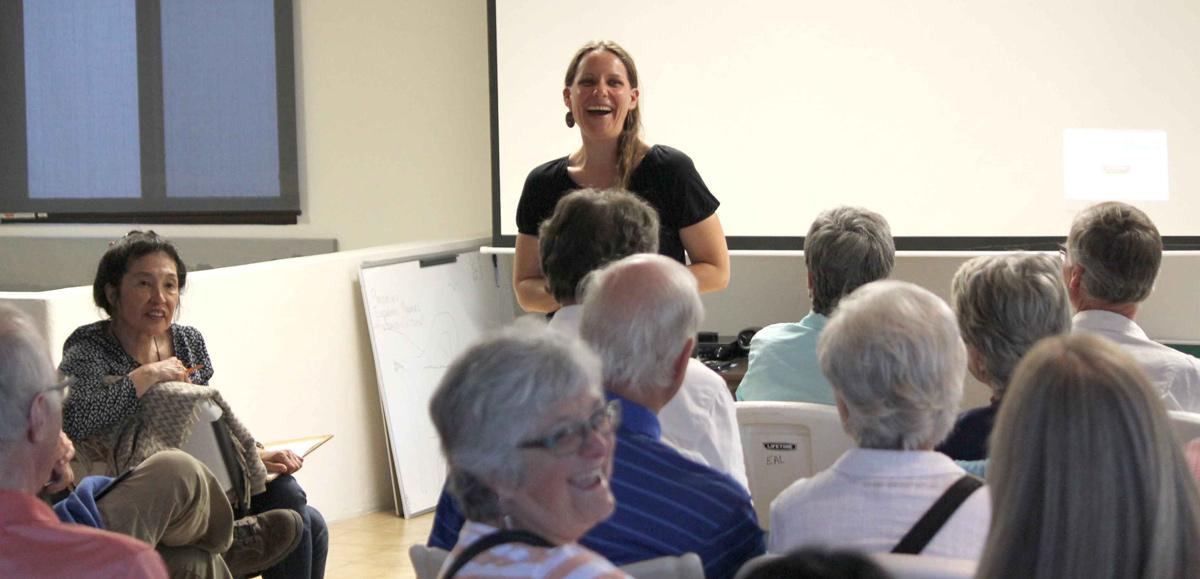
Eco-Alianza staff photo
Dr. Busquets, from the Department of Conservation Biology at the Ensenada Center for Scientific Research (CICESE) holds a Ph.D. in Marine Sciences and serves as a Research Assistant in the lab of Dr. Diane Gendron, who has presented previously at the Blue Whale Festival and as part of Eco-Alianza’s Visiting Scientist program.
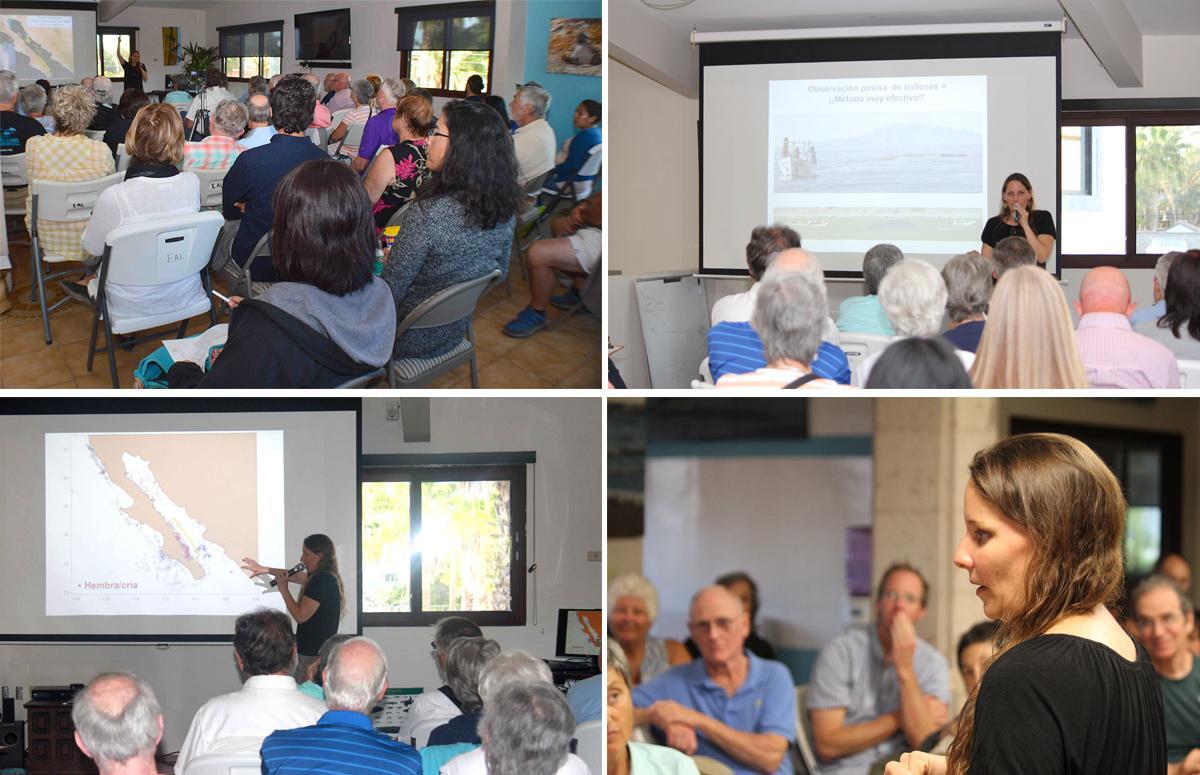
Eco-Alianza staff photo
Learn about Loreto’s Iconic Chocolate Clams[/title]
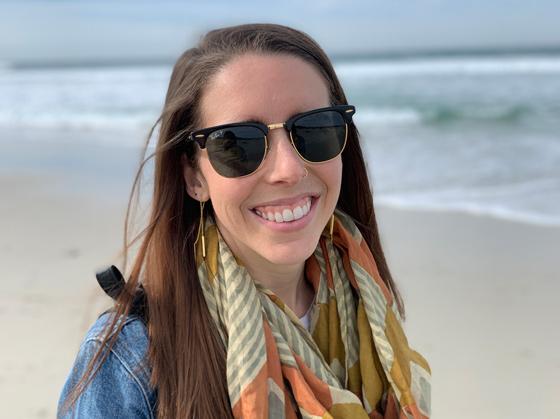
Kara Pellowe
As part of Eco-Alianza’s Visiting Scientist program, Ph.D. candidate Kara Pellowe will discuss her research on the biological processes of chocolate clams and the social impacts of Loreto’s chocolate clam fishery. The bilingual program is free and open to the public, and will be presented Thursday, April 4, at 5:00 p.m. at Eco-Alianza’s CenCoMA headquarters in the upstairs auditorium.
Kara holds a Bachelor of Science degree from Cornell University in the Science of Natural and Environmental Systems. She also earned dual Masters degrees in Biology and Sociology from Brown University, and is pursuing a Ph.D. in the Ecology and Environmental Sciences Program at the University of Maine.
More specifically, Kara says, “I am investigating the dynamics of coupled social-ecological systems, especially how ecological processes, together with human activities, influence ecosystem function and the delivery of valuable ecosystem services on which people rely. My dissertation research is focused on understanding how ecological and social factors affect the resilience of the Mexican chocolate clam fishery in Baja California Sur, Mexico.”
Kara is fluent in English and Spanish, so she will present a bilingual program, with slides.

Eco Alianza staff photo
Eco-Alianza’s Volunteer Task Force will team up with the Nopoló Association of Property Owners as well as Loreto Bay homeowners for another highway litter clean-up, the morning of April 4. No need to sign up in advance – just show up at 8 a.m. at the big orange Fonatur sculpture at the north entrance to Loreto Bay. Wear sturdy shoes, brightly colored clothing, a hat, and sturdy gloves if you have them. Feel free to bring a drink or a snack – we do take breaks, and we will be finished before 11.

Photo courtesy of Alois Suter
As participants from the March cleanup will tell you, it’s a lot more fun than you might imagine, and your neighbors (and the local environment) will thank you. Bring a friend! If you have questions, email Alois Suter at Al.Suter@gmail.com or Mark Hufford at Mark_Hufford@yahoo.com.
The Loreto Bay presentation previewed in the February Soundings has been postponed. The March 27 presentation, profiling Eco-Alianza programs, will be rescheduled – watch Eco-Alianza’s Facebook page for announcement of a new date.
![]()
“Nature Notes” is a monthly short feature detailing some of the wondrous, seasonal activities taking place around us.
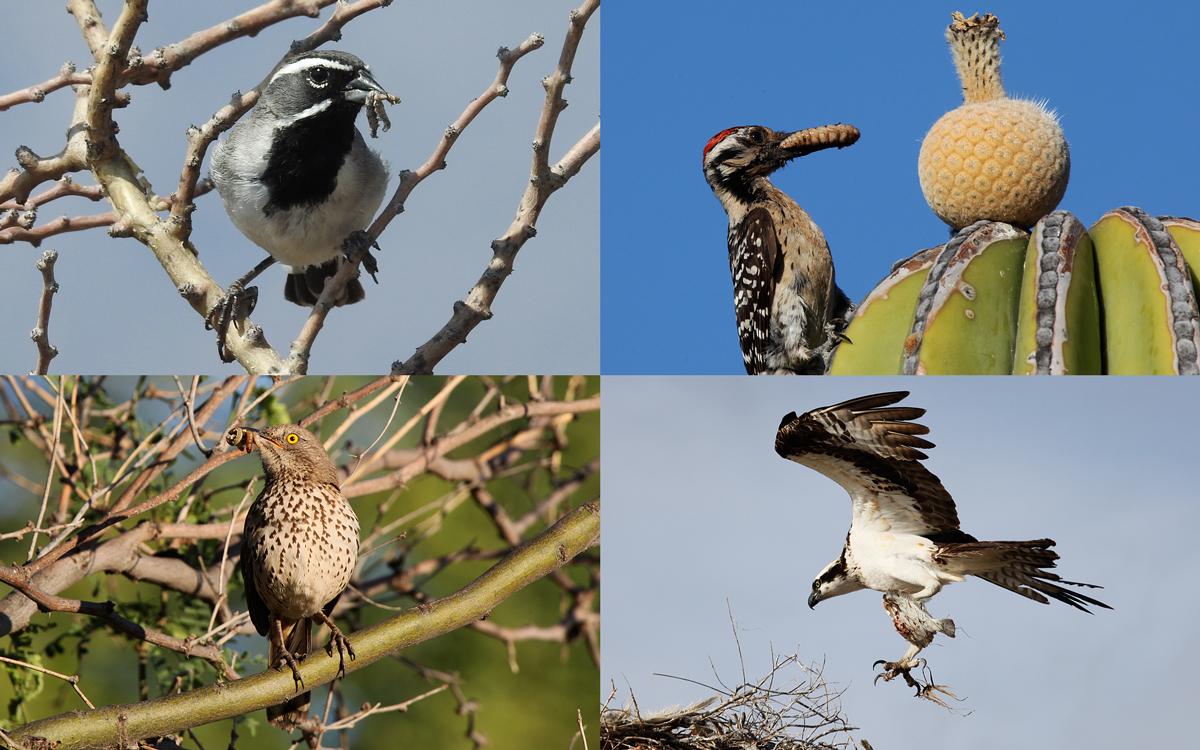
Photos courtesy of Tom Haglund/BCS Birds
Photos, clockwise from top left: Black-throated Sparrow (Amphispiza bilineata) with a selection of yummies. Ladder-backed Woodpecker (Picoides scalaris) with a mega yummy. Osprey (Pandion haliaetus) with a halibut landing on the nest where its young await feeding. Endemic to Baja Sur, this Gray Thrasher (Toxostoma cinereum) will offer this elegant invertebrate repast to its nestlings.
By Tom Haglund
Anyone who has ever fed growing kids knows that it takes a lot of time and energy. For birds who parent altricial chicks this is magnified by the progeny’s often rather large numbers and enormous appetites. If your twins are running you ragged, imagine sextuplets. Precocious chicks hit the ground running as soon as their down dries and only require a bit of guidance as to what is OK to eat and where to find it. But the ones who stay in the nest for weeks, or sometimes even months, are super needy the whole time. All of their needs must be fulfilled at great energy expense by their parents. During this busy time the parents may eat more than usual to maintain their own energy levels and at the same time provide food for their fast growing (think teenagers) offspring.
The altricials include raptors, waders, gulls, pelicans, songbirds, hummingbirds, woodpeckers, orioles, and many others. Precocious species include small shorebirds, quail, ducks, geese, chickens, grouse, pheasants, turkeys, and more.
A hummingbird mom nearing the end of her weeks-long mothering period often looks pathetically skinny and worn. She swirls around picking tiny insects out of the air for most of her time, and then rams them down the throats of her young. A woodpecker brings some pretty big invertebrates to the nest and stuffs them into the gaping mouths of as many as 5 youngsters. A Gila Woodpecker (Melanerpes uropygialis) has been seen to catch small crabs in salt water and feed them whole to its charges. A raptor must tear most of the prey it brings to the nest into bite-sized pieces and allow the nestlings to snatch them and gulp them down. An Osprey must also do some tearing when sharing fish among its brood. Adult owls bring small rodents home and the owlets may swallow them whole.
During the period of all this frantic bird feeding the prey species being provided to many of the young have also been feeding. If they happen to be feeding on your landscaping, please think about where your insecticide may be winding up if you feel the need to spray.
Spanish names of birds mentioned:
Gila Woodpecker – Carpintero del Desierto
Black-throated Sparrow – Gorrión de Garganta Negra
Ladder-backed Woodpecker – Carpintero Mexicano
Osprey – Gavilán Pescador
Gray Thrasher – Cuitlacoche Peninsular
CenCoMA Outdoor Courtyard
6:45 p.m.[/content_box][content_box title=”April 4″ icon=”” backgroundcolor=”” iconcolor=”” circlecolor=”” circlebordercolor=”” circlebordersize=”” outercirclebordercolor=”” outercirclebordersize=”” iconrotate=”” iconspin=”no” image=”https://ecoalianzaloreto.org/wp-content/uploads/2019/03/litter-225-v2.jpg” image_width=”220″ image_height=”” link=”” linktext=”” link_target=”_self” animation_type=”” animation_direction=”” animation_speed=””]Litter Clean-up along the Carretera
Meet at the Orange Fonatur Sculpture
8 – 11 a.m.[/content_box][content_box title=”April 4″ icon=”” backgroundcolor=”” iconcolor=”” circlecolor=”” circlebordercolor=”” circlebordersize=”” outercirclebordercolor=”” outercirclebordersize=”” iconrotate=”” iconspin=”no” image=”https://ecoalianzaloreto.org/wp-content/uploads/2019/03/chococlams-225.jpg” image_width=”220″ image_height=”” link=”” linktext=”” link_target=”_self” animation_type=”” animation_direction=”” animation_speed=””]Visiting Scientist Presentation on Chocolate Clams
CenCoMA Upstairs Auditorium
5 p.m.[/content_box][content_box title=”April 7″ icon=”” backgroundcolor=”” iconcolor=”” circlecolor=”” circlebordercolor=”” circlebordersize=”” outercirclebordercolor=”” outercirclebordersize=”” iconrotate=”” iconspin=”no” image=”https://ecoalianzaloreto.org/wp-content/uploads/2019/03/clocksand-225.jpg” image_width=”220″ image_height=”” link=”” linktext=”” link_target=”_self” animation_type=”” animation_direction=”” animation_speed=””]Remember to Change Your Clocks
Loreto Daylight Savings Time Begins[/content_box][/content_boxes]





